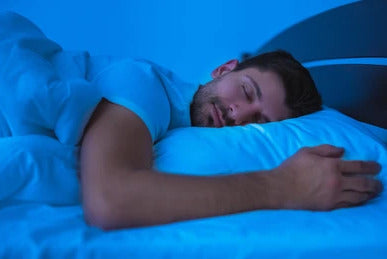Sleep quality, a topic of increasing importance, is a subject that is garnering much attention in our health-conscious society today. Good sleep is not only beneficial but also fundamental to our overall health and well-being. It affects our cognitive abilities, physical health, mood, and even our longevity. However, there is one aspect that often takes a backseat in sleep discussions - the effect of light color. This comprehensive guide is designed to bring this critical factor to the forefront. We delve deep into understanding the significant role that light color plays in sleep quality, exploring its impact on our sleep patterns, and answer the pivotal question that many people have - what color light is best for sleep?
Relationship Between Light and Sleep
Sleep, contrary to common belief, isn't merely a passive process; instead, it's an intricate interplay of various factors, each contributing to the quality and duration of our slumber. One such pivotal factor is light exposure. In our exploration of the complex relationship between light and sleep, we delve into understanding how light, in its various forms and colors, influences our sleep.

Melatonin - The Key Hormone in Sleep Regulation
At the core of our sleep and wake cycles lies a hormone known as melatonin. This hormone, primarily produced in the pineal gland in the brain, is the critical player in sleep regulation. Our exposure to light, particularly the colors of light we encounter in our daily lives, heavily influences melatonin's production and release. Certain light colors, such as blue or white, can suppress melatonin production, resulting in a disruption in our sleep-wake cycle.
Blue Light and Its Impact on Sleep Quality
Among the spectrum of light colors, blue light warrants special mention. Commonly emitted from electronic screens, energy-efficient lighting and even certain types of street lighting, blue light has a particularly potent effect on sleep quality. Exposure to blue light during the evening hours can trick our brains into believing it's still daytime, creating a misalignment in our perception of time. This misalignment reduces melatonin production, making it harder for us to transition into sleep. Over time, this can result in a pattern of disrupted sleep cycles, adversely impacting our overall sleep quality and health.
What Color Light is Best for Sleep
Having understood how certain light colors can adversely impact sleep, our focus now shifts to discovering the best color light for sleep, one that promotes rather than hinders a good night's sleep.

The Sleep-Promoting Properties of Red and Orange Light
Numerous studies and research have shown that red and orange lights are the most beneficial for sleep. Unlike their cooler counterparts, these warm light colors are less likely to suppress melatonin production, making them the most relaxing light colors for sleep. By creating an environment conducive to rest, these warm colors stimulate feelings of calmness and relaxation, preparing your body and mind for a rejuvenating sleep.
Light Management - A Component of Good Sleep Hygiene
Beyond merely knowing the best light color for sleep, effective light management throughout the day is crucial in maintaining a healthy sleep-wake cycle. This involves minimizing exposure to blue light in the evening hours, which can suppress melatonin production, and maximizing exposure to bright light during the day, which can stimulate alertness and energy. By being mindful of our light exposure, we can help our bodies adhere to a natural sleep rhythm, thereby promoting better sleep quality.

Solutions for Sleep Improvement - Luminette Light Therapy Glasses
In our relentless quest for better sleep, it's worth considering innovative solutions like Luminette Light Therapy Glasses. These glasses, ingeniously designed to emulate the benefits of natural sunlight, can help regulate your sleep-wake cycle and improve your mood. They offer a practical solution for those struggling with seasonal affective disorder or other mood disorders, providing much-needed light exposure during the darker months.

Conclusion
In conclusion, when it comes to determining the best light for sleep, red or orange emerges as the top contenders. These warm colors create a soothing environment that promotes restful sleep. By managing your light exposure throughout the day, limiting exposure to blue light in the evenings and embracing innovative solutions like Light Therapy Glasses, you can significantly improve your sleep quality. Here's to a future filled with peaceful slumbers and energized mornings! May you sleep well and wake up refreshed with the right light color for sleep.








